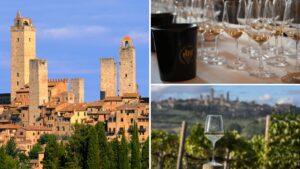Tuscany, one of the premier wine regions in the world, is known for its prestigious wines like Brunello di Montalcino, Vino Nobile di Montepulciano, Chianti, Vernaccia di San Gimignano, and Super Tuscans. Tuscany is also a perennially popular destination for the region’s culinary excellence.
Amerigo Vespucci Airport in Florence has recently announced an overhaul of its international terminal, complete with a new design, a re-oriented runway and, best of all, a rooftop vineyard.
US design studio Rafael Viñoly Architects unveiled the plans last week.
“A leading vintner from the region will cultivate the vineyard and the wine will be crafted and aged in specialised cellars beneath the terminal’s roof,” a spokesperson for Rafael Viñoly Architects explains.
The 19-acre vineyard will gently slope upwards, evoking the rolling Tuscan hills in the distance. There will be 38 vines in total, each measuring 2.8 metres wide and ranging from 455 to 570 metres lengthways. Between each vine, a 1.2 metre-wide skylight will allow shafts of light to flood the terminal below.
Grapes will be harvested by leading vintners in the region, produced and aged in cellars on-site. the airport will be able to hold more than 5.9 million international passengers. The airport is expected to open its first phase in 2026, and the second in 2035.







